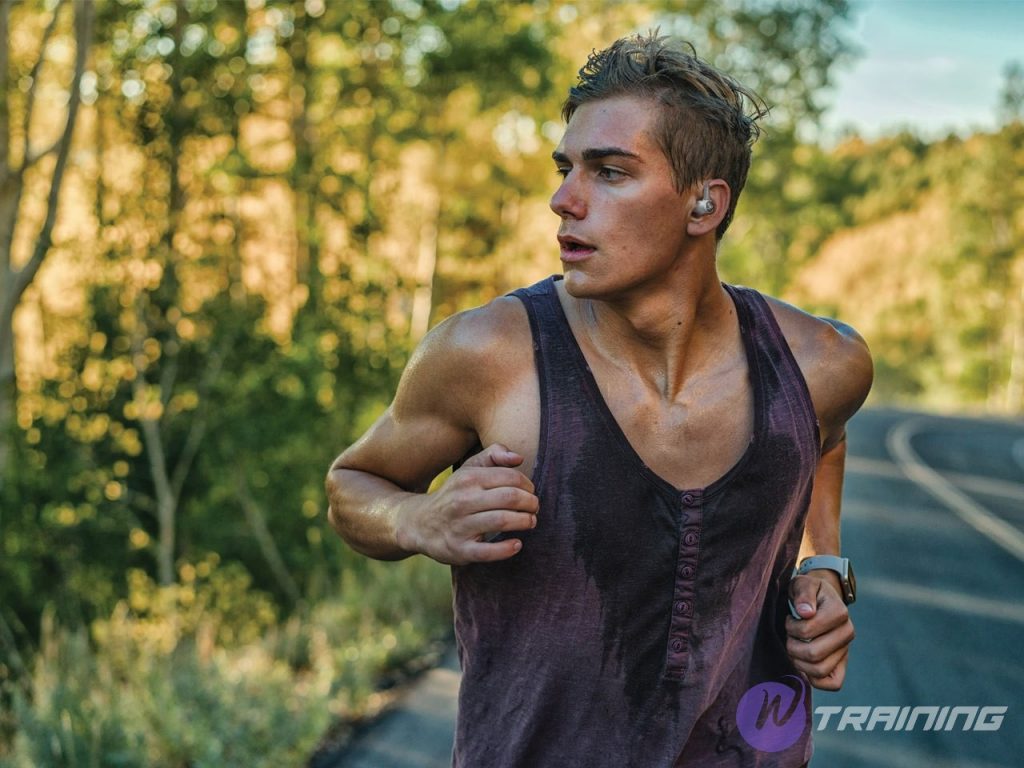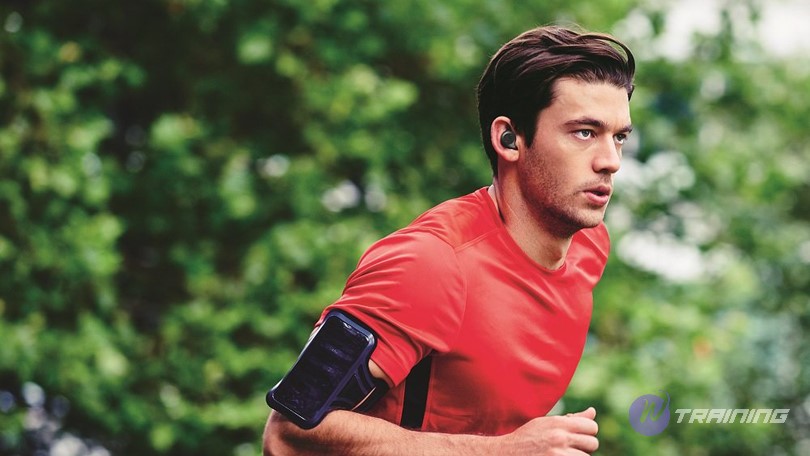Wireless earbuds always appeal to runners because of their neatness and convenience. Especially in hot weather, the absence of a neck strap helps you minimize unwanted annoyances. But have you ever wondered, what are the best true wireless earbuds? Take a look at our suggestions.
True wireless earbuds for running – factors to consider
1. Withstanding water and sweat
The level of water resistance is crucial if you’re going to wear true wireless in-ears for running or another exercise. IP ratings are becoming a more common inclusion on product spec pages and on the outside of boxes for headphones, so it’s important to understand what they actually mean.
As usual, a product is listed as having a rating of, say, IPX7.
- That X is a placeholder, not something that stands for “extreme” or any other rugged superlatives. The X is a placeholder because, often, companies will simply not thoroughly test for dust ingress, but they know they’ve built a product sturdy enough to provide some basic level of protection from it. So rather than put a zero there, which would look bad, the X means the product likely has a degree of dust protection, but it wasn’t measured.
- IP ratings follow a simple structure: The first number denotes the dust ingress rating on a scale of 0-6, and the second number denotes water protection on a scale of 0-8 (there are some higher degrees of IP protection for liquids, but they are rarely seen on consumer-level products). So if a product is listed as IP5-6, it means that the dust ingress protection is rated at 5, and the water ingress protection is rated at 6.
Furthermore, the numbers don’t necessarily correspond to some obvious system – a higher number does mean a higher level of protection, but each number is a new, very specific degree of protection.
- IPX5, for instance, means the product is protected from water projected from a certain-sized nozzle.
- IPX7, besides, means the product can withstand being submerged up to a meter—this is typically the highest IP rating you’ll see.
2. Battery life and Charging cases
The battery life is undoubtedly the obvious weak point of the true wireless class so far. In fact, today’s best pairs can only operate for about 7 hours continuously on a full charge. Therefore, this is the reason why charging case is paid special attention by carriers.
Generally, most runners do not carry the charging case with it to extend battery life. If you run a full marathon, it’s likely that your true wireless headphones will last for most, if not the entire, race. If you run a half marathon, you almost certainly don’t need to worry about running out of battery. Of course, battery life is highly dependent on volume level, so one way to get longer results is to listen at lower levels.
3. In-ear fit
Importantly, the in-ear headphones are both lightweight and significantly larger than wired ones. In fact, this larger contour will usually rely on different areas of the ear for added stability. The earplugs that seal the ear canal are also important for keeping the headphones in place and for a solid ear-to-ear balance and depth of bass.
Many sport-focused models include more fitting accessories such as earrings or even bands around the headset to increase its width slightly. Obviously, nearly all materials involved are some form of rubber or silicone, which aids in a secure fit.
4. Apps and Extra features
In fact, some companion apps only help you pair the headset with your phone, and some have additional features.
- First, the most economical app is the Jabra, which has a great EQ and a host of features like Ambient Hear mode, a pink noise option for focus, and a motion sensor.
- Second, the JayBird app also features user-tuned EQ, making the sound of this app easy to deliver from heavy bass to almost flat response.
There are also third-party constraints in the realm of applications, for example:
- JBL UA True Wireless Flash headset comes with MapMyRun’s one-year premium membership.
- Meanwhile, the Jabra Elite Sport offers a built-in heart rate sensor and accelerometer sensor for tracking fitness stats, which we found generally to be reliable in testing.
Related: Essential Running Gear List That You Need for Training
Top 10 best true wireless earbuds for running
| Beats Powerbeats Pro Wireless Earbuds | Apple AirPods Pro Wireless Earbuds | Anker Soundcore Life P2 True Wireless Earbuds | Jabra Elite Active 75t | JBL UA True Wireless Flash X | |
Price |
$235.49 | $219.00 | $33.99 | $133.99 | $169.95 |
In-Canal |
✅ | ✅ | ✅ | ✅ | ✅ |
Bluetooth |
✅ | ✅ | ✅ | ✅ | ✅ |
Water/Sweat Resistance |
✅ | ✅ | ✅ | ✅ | ✅ |
Battery life |
More than 24 hours with charging case | Around 8-10 hours | More than 28 hours with charging case | Up to 24 hours with charging case | More than 50 hours with charging case |
Bottom line |
Adjustable, secure-fit earbuds | An incredibly well-designed earbuds | The best in the business | A neat fashion design | A bass experience |
| RHA TrueConnect | Tribit Flybuds 3 | Bang & Olufsen Beoplay E8 Sport | Jaybird Vista | JBL Endurance Peak II | |
Price |
$64.95 | $33.99 | $344.99 | $149.99 | $99.95 |
In-Canal |
✅ | ✅ | ✅ | ✅ | ✅ |
Bluetooth |
✅ | ✅ | ✅ | ✅ | ✅ |
Water/Sweat Resistance |
✅ | ✅ | ✅ | ✅ | ✅ |
Battery life |
More than 25 hours with charging case | 100 hours with charging case | More than 30 hours with charging case | 16 hours | More than 28 hours with charging case |
Bottom line |
A high-end cheap true wireless earbud | An industry-leading playtime | Professional designed | Compact fitness earbuds | Conveniently on and off |
In conclusion, above are the best true wireless earbuds available on the market today. However, with a variety of prices, you absolutely can choose a product that suits your financial ability. Try them out and comment to let us know!
Read more:
Running Gear For Rain and Wind: How to Handle A Rainy Race
Cold Weather Running Gear: Must-Have Winter Items Checklist









